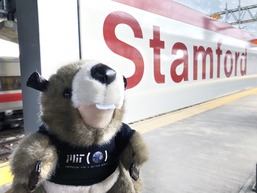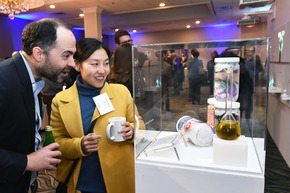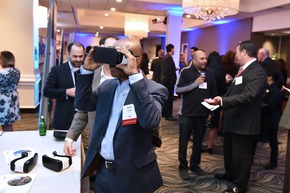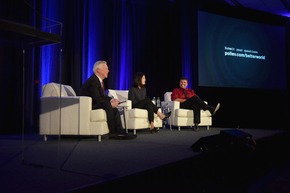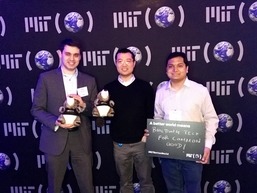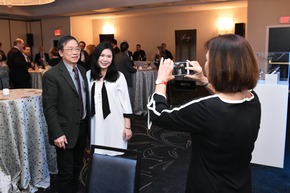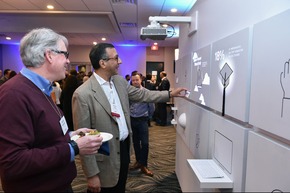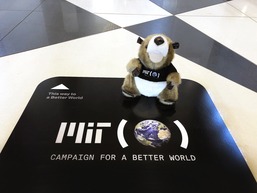Video: How Is the MIT Community Making Space for Innovation?
-
-
Slice of MIT
Filed Under
“Innovation and entrepreneurship, or the idea of accelerating the journey from data to impact, is at the heart of MIT,” said Maria Zuber, vice president for research and E. A. Griswold Professor of Geophysics, at a recent MIT Campaign for a Better World event in Connecticut.
On February 27 at the Crowne Plaza Stamford, as part of the MIT Better World event series, 245 alumni and friends from Westchester and Fairfield counties gathered to hear MIT faculty, alumni, and Institute leaders speak about the current and future shape of innovation and entrepreneurship. The event featured introductory remarks by Zuber and talks from Marty Culpepper SM ’97, PhD ’00, professor of mechanical engineering, “Maker Czar,” and director of Project Manus; Stephanie Suejeong Lee MArch ’19, cofounder of Space Us; and David Schmittlein, John C Head III Dean and professor of marketing at MIT Sloan School of Management.
(Watch a video of the full program.)
Culpepper outlined the important role the Institute’s makerspaces play in allowing students to innovate. “Right now, at MIT, we have about 130,000 square feet of makerspaces and machine shops—that’s about two football fields of space,” he explained. “Out of all of that, only about 5 percent of that space is what we call community makerspace. And it turns out, for the future, that’s what our students most need to solve the next-generation problems. For innovators and entrepreneurs, that’s the space that they like the best.” To help address that need, Culpepper said the Institute is launching the design of MIT’s biggest makerspace, to be built as part of the Met Warehouse renovation.
Lee expanded the discussion from innovation spaces on campus to those in cities around the country. Inspired by seeing the same “for lease” signs around Cambridge while earning her graduate degree in architecture, Lee cofounded Space Us, a platform to transform underused spaces.
“We started, really, by imagining all the amazing things that could happen in this excess space,” she explained. “What if they were spaces for people to meet, people to work? They could be spaces to see exhibitions, to watch performances. And as we dreamt, we uncovered this deep need expressed by local visionaries, creatives, and entrepreneurs for space. And so, for the past three years, we have been working alongside landlords to transform vacant spaces and turn them into these creative hubs that serve as a place for visionaries, creatives, entrepreneurs to meet, to share, and to grow.”
Space Us would not have been possible without Institute programs and resources for entrepreneurs, including MIT $100K, delta v, and DesignX, added Lee.
When it comes to developing innovators and leaders, MIT Sloan Dean Schmittlein said his school is focused not just on skills but traits. “Every business school knows that you can make people learn accounting,” he explained. “But you can’t make someone develop courage. You can’t make someone develop resilience. You can’t make someone develop empathy. They have to want to do it, they have to choose those experiences.” MIT Sloan’s programs and experiences, he said, provide its students with the opportunities to make that choice.
The alumni and friends in attendance queried speakers on topics ranging from makerspace accessibility to trends in how students are approaching the world’s problems. One thing was clear by evening’s end: The MIT community is at the forefront of creating and improving spaces where innovation is flourishing.
“MIT is a great place where we have balance—where we work very hard to make sure that we give enough guidance, but at the same time, we step back out of the way so that people can go experience things by themselves,” Culpepper said. “And that’s important. That’s how growth happens.”
Watch the full program and visit YouTube for a playlist of additional videos from Better World programs held around the world. Learn more and get involved at betterworld.mit.edu.


